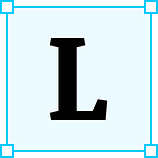How to prepare for your Facebook product design interview
Or at any company, really.
 Last month, I joined Facebook to work on Instagram DMs and as a way to pay it forward, I offered to help anyone with their job search. My inbox was flooded very quickly and not surprisingly, the majority of messages inquired about how to actually land a product design job at Facebook.
Last month, I joined Facebook to work on Instagram DMs and as a way to pay it forward, I offered to help anyone with their job search. My inbox was flooded very quickly and not surprisingly, the majority of messages inquired about how to actually land a product design job at Facebook.
Rather than tackle that question one-on-one, I decided to break down the strategy I took to preparing for my interviews.
And given how industry-standard Facebook’s interview process is, I used the same strategy for numerous other companies and you certainly can as well.
Facebook’s product design interview is largely made up of 4 parts:
- Portfolio Review
- App Critique
- Whiteboard Exercise
- Background Interview
These interviews will be spread throughout the overall process, with some repeated twice with different interviewers.
Portfolio Review
Also known as the “Past Work” interview within Facebook, you will be asked to go over 2–3 projects in detail.
Prepare a slide deck
The most obvious but needs to be said: do not simply walk through your online portfolio as it is not an effective medium for verbal storytelling.
In fact, your online portfolio and slide deck service very different needs and therefore should have very different structures. So dedicate the time to translate your work into a proper presentation.
Perfect your narrative
Your interviewers are not obligated to stay interested for the entire 30–45 minutes of your presentation. Maintain their attention by creating an engaging narrative.
- Put your final designs first. Pull your audience in with an attractive final product and make them eager to trace the steps back with you.
- Put your final metrics first. If your project met its success metrics, couple it with the final product slide mentioned above. Even if it didn’t ship, the fact that you’re presenting this work should mean there was a meaningful outcome, such as improvements in usability metrics.
- Be selective about showing process. Not every detail is worth mentioning, particularly those that demonstrate the minimum requirement of a designer’s job (ie brainstorming sessions, stakeholder management, early sketches). Instead, fixate on the turning points and key decisions made.
Write a script
Minimize friction for yourself by finding the right words to describe complex and ambiguous concepts beforehand.
Compose the exact words within the presenter notes for every single slide and check the following:
- Use colloquial words. You don’t talk like an SAT essay in real life so leave out your “aforementioned”s and “indubitably”s.
- Highlight the point of each slide. Make sure you’re originating from a single focus and constructing details around that focus. You may find that you need to break up some slides because you have too many points of focus or that you need to delete a slide because it has none.
- Practice your script. Record it, time it, listen for ebbs and flows, and hone it. Then rehearse it with friends and ask them direct questions like “Where did I lose you the most?”.
- Finally, don’t actually read off the script. If you’ve carefully crafted and practiced your script, you don’t need to read off of it during the interview. In fact, you shouldn’t because you ultimately need to be engaged with your audience and be prepared to answer intermittent questions. But you will find that when you arrive at each slide, the words will flow through you easier as you’ve already chosen them ahead of time.
App Critique
Facebook notably requests its candidates to critique a mobile app, although this same exercise at other companies can easily extend to desktop apps, service designs, and more.
Choose a framework
A successful app critique will need to be thorough and touch on nearly every facet of design. You will have a lot to cover and it can be difficult to remember which you’ve hit.
Nail down a framework that you feel comfortable with. You can choose one that you find or build your own, as long as it allows you to:
- Highlight both good and bad designs. And for the bad portions, always suggest solutions or improvements.
- Consider all design perspectives: product strategy, content strategy, visual, interaction, motion, branding.
- Demonstrate both high- and lower-level thinking. From company objectives to typography choices.
Narrow down a few apps to practice
You will want to practice and warm up your critical thinking muscles before your interview. But of all the apps that exist, use your time wisely by focusing on those that are most likely to be selected by your interviewer.
- To dogfood or not. Facebook and most larger companies will avoid asking you to critique apps that they made or own. Smaller companies, however, may intentionally choose their own product.
- Target apps with a broad audience. This app should already be installed on both you and your interviewer’s phones. Apps like Wag and VSCO would be too specific of a niche to be selected.
- Avoid apps with paywalls. In the same vein as above, both you and your interviewer will need access to the interface. If a significant part of the app requires a transaction to be unlocked, like Hulu, it probably won’t be picked.
- Avoid apps with sensitive data. It’s unlikely anything with your private, sensitive data will be selected, such as Venmo or banking apps.
- Choose apps with high complexity. Your critique is expected to last 45 minutes and in order to fill that space, your app should involve complex user flows. The default iOS Note app, for instance, is an unlikely choice.
Whiteboard Exercise
Also known as the “Problem-Solving” interview at Facebook, you will be given an open-ended prompt and deliver a wireframe solution.
Draw your framework
An unexpectedly difficult part of this interview is time management. In the same vein as your app critique, choose a framework beforehand and time-box each major section as these discussions can meander.
Practice spending the first minute dividing up parts of the board. Allocate larger amounts of space for longer sections so that you will implicitly follow your agenda.
Train your collaboration skills
You are expected to work with your interviewer as a peer and you should leverage them to make decisions collectively and quickly. However, avoid asking lazy questions such as “What do you think we should build?”.
As you run through exercise problems, hone your collaboration skills. Even if you’re practicing alone, pace yourself and pose mindful questions throughout.
- Clarify the prompt: “By urban communities, is it scoped to only those within the US?”
- Validate assumptions: “Can I assume we have enough engineering bandwidth to build any of our ideas?”
- Gauge preference between a few options: “Between these two target audiences, which would you prefer we focus on?”
- Stay in sync: “Before I move on, is there anything you’re not sure about?”
Background Interview
Lastly, we have the ubiquitous behavioral interview, where a design manager will gauge your soft skills.
Self-reflect on common topics
Although you shouldn’t be preparing cookie-cutter answers, run through some of the most common questions and raise your self-awareness on topics you may not have internalized yet.
- Past work: What could you have done better? Where would you take it next? When was a time your design failed or pivoted?
- Collaboration skills: How do you handle conflict? How did you pull in user researchers or content strategists? How did you ensure your work was properly implemented by engineers?
- Process: How do you know when a design is good enough? How do you prioritize between big bets and incremental adjustments? How would you approach a very tight deadline?
- Career values: What are your short- and long-term goals? What are your areas for improvement? What type of manager do you thrive under? Why are you leaving your current company?
Prepare your own questions
As the most conversational part of the overall interview process, this is a great chance to pose your own questions to a manager. List some things you would genuinely like to learn about so that you can make the most of this time.
- Role expectations: How will you measure success for this role? Will this position be expected to lead user research or code? What are the first projects this role will take on?
- Growth: What do the IC and management tracks look like? How and when are performance reviews done? How open is the company to internal transfers?
- Leadership: How would you describe your management style? How do projects and objectives form at the company? How does design have a seat at the table?
- Culture fit: How is the work-life balance? How do work culture and processes differ between different teams and offices?
Final advice
Set yourself up for success and do whatever it takes to feel confident about your interviews.
- Work with your recruiter. Feel free to ask for more information on your upcoming interview and set realistic dates to accommodate the time you need to practice.
- Interview the company. Although you’re being interviewed, there also has to be a fit for you. As you progress through, assess and be transparent about whether the company aligns with your career trajectory.
- Chat with insiders. Leverage your professional network and reach out to anyone who has or is currently working there. Ask the questions you might not ask your interviewer and get the full picture.
Regardless of the company you’re interviewing with, the effort that you’ll put into preparing and practicing will be valuable across the board. Your work will be transferrable and you will only become more comfortable with an initially uncomfortable situation.
Best of luck on your upcoming journey. You’re going to do great.
Disclaimer: It goes without saying that I don’t represent Facebook or their recruitment process. Everything I say is a compilation of my own experiences and opinions.
